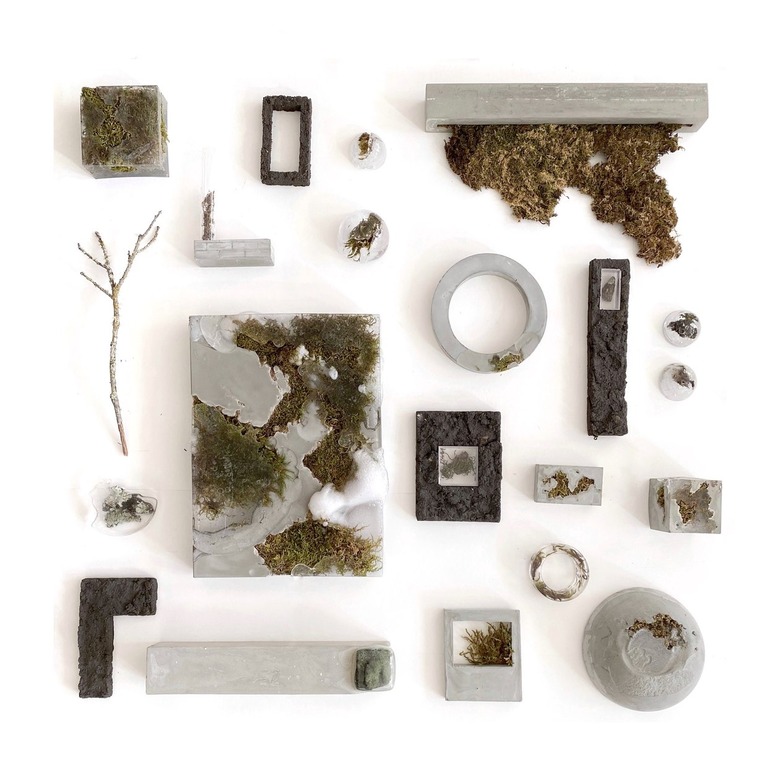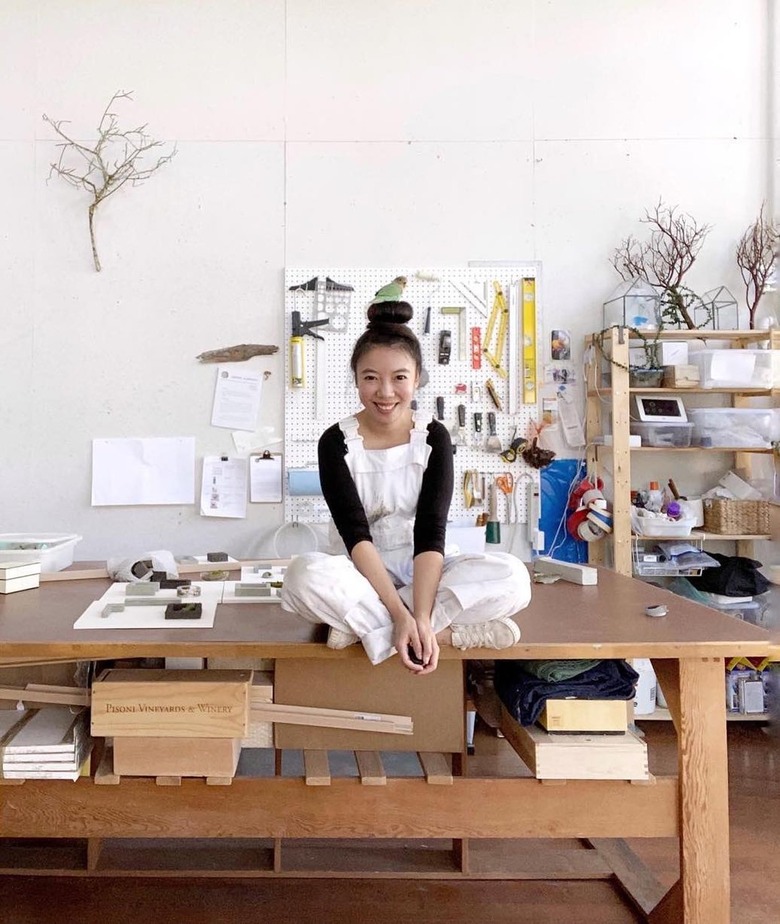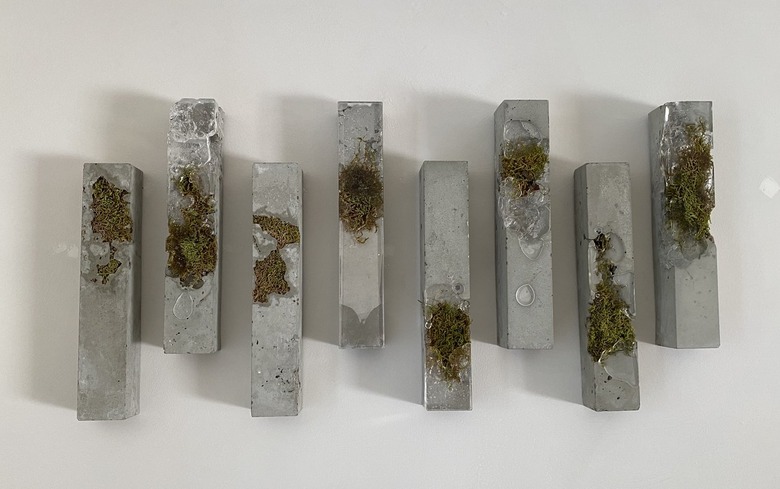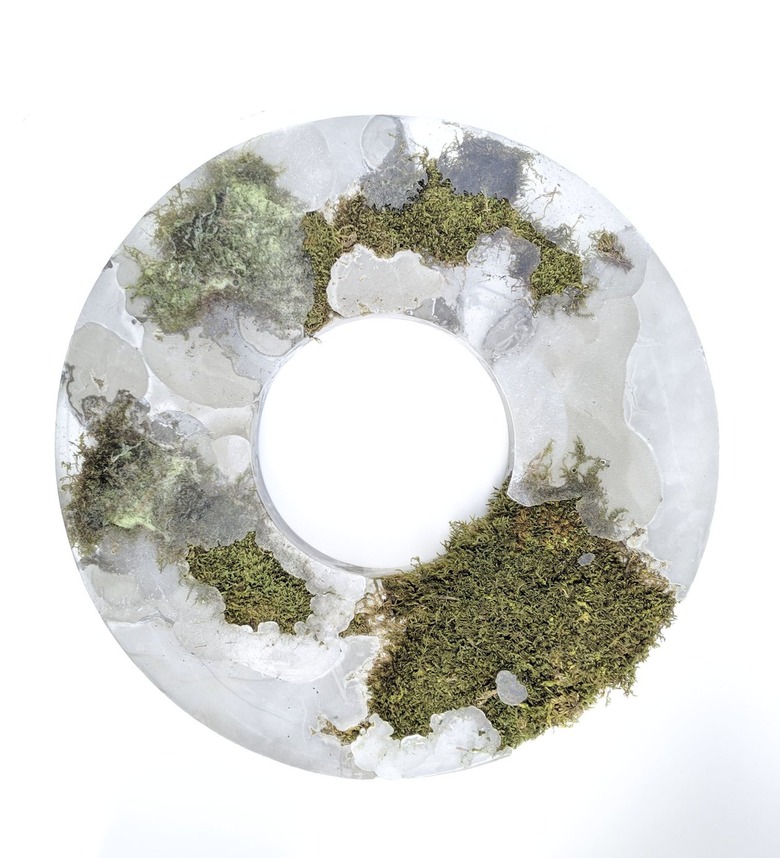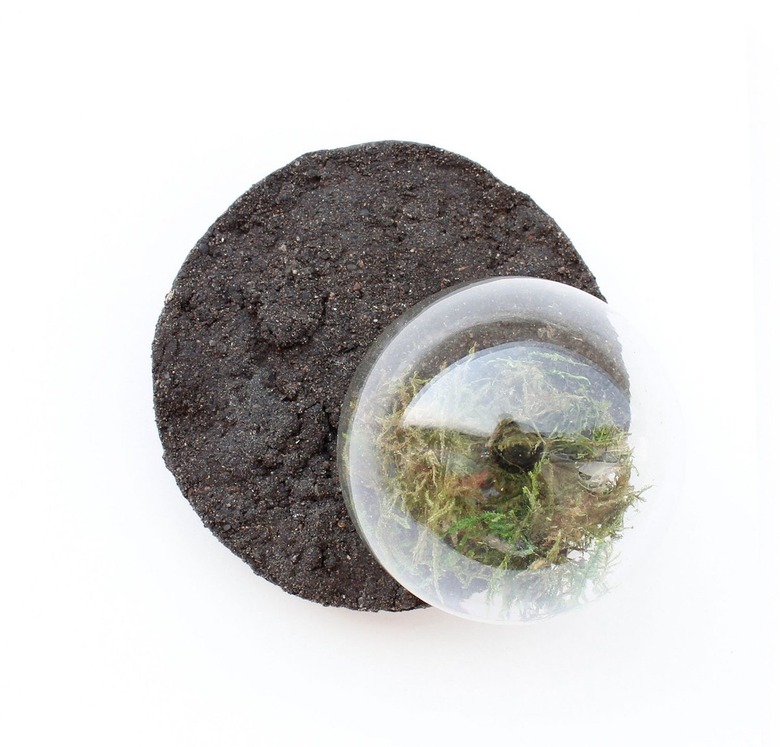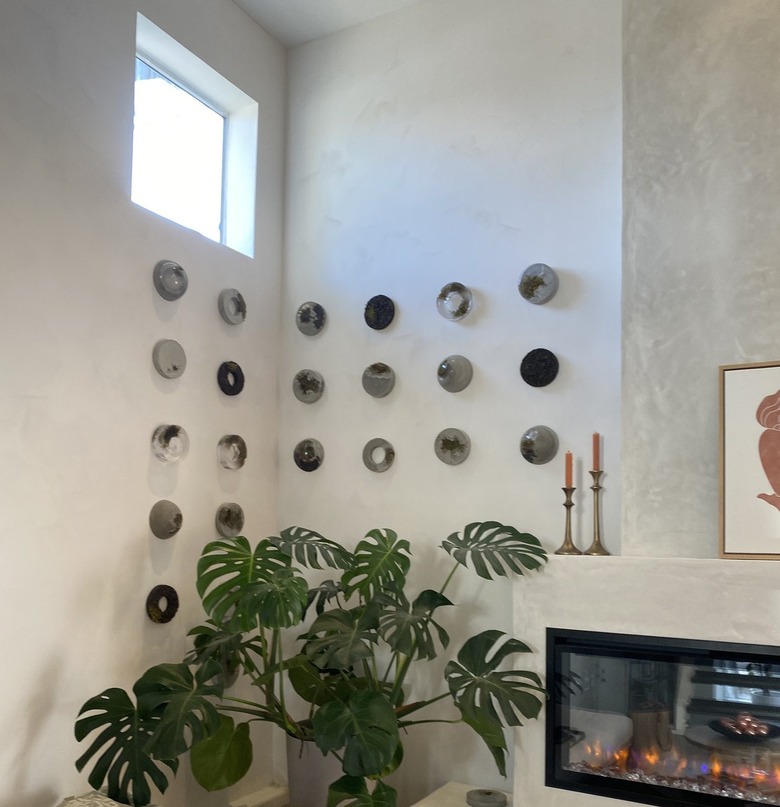This Thai Artist Forages For Sculptures That Represent Humans And Nature As One
If you're driving through Napa Valley and see someone carefully examining a tree branch on the side of the road, it might just be Sasi (aka Sasinun Kladpetch). Using foraged moss, lichen, and dirt as art supplies, along with human-made materials such as concrete and resin, the 32-year-old artist crafts wall sculptures that explore how humans and nature can cohesively live together.
Sasi was raised in Thailand and, since 2013, has lived in the United States, which is where she went to grad school for fine arts at the San Francisco Art Institute. The creative also manifests her experience as an immigrant in the sculptures she builds.
"When I see a plant or moss growing along the sidewalk in the cracks, it reminds me of myself as an immigrant," Sasi tells Hunker. "When I moved here, to a new environment, it was a lot for me to adjust myself to. Language is different. Culture is different. When I see the moss — no one planted it there — it's just natural elements, like rain, water, and dust, and it formed itself into a plant. If no one kills it, it will slowly grow. To me, moss is very tough to be in that situation and learn how to adapt."
It had always been the sculptor's dream to come to America, but she was deeply attached to her family in Thailand. After receiving her bachelor's degree there, Sasi's grandfather sadly passed away, and it was then that she felt ready to move. "There's a lot more opportunity in America, in terms of [starting an] art business," she explains.
Sasi's background is actually in ceramics, but she changed her focus after moving to the U.S. "Ceramics are more complicated with timing and unpredictable until you get the final result," she says. "Sometimes it takes weeks to get done, so I was trying to experiment with other materials." That's when she found concrete, a raw human-made material that allows nature to grow in and around it.
"It's a material that's breathing for me — you're not sealing it off," states Sasi, describing concrete. "It's semi-organic, I would say."
A key part of Sasi's creative process is being able to control her materials as much as possible. Because of the artist's experience with clay, she likes to incorporate soil into her work — especially since it's something that can be molded to form new shapes. However, while Sasi works to get control of nature, she also acknowledges, "Sometimes nature controls us — like with a lot of disasters in the world. But you can also learn to live cohesively with it."
Sasi uses resin as an example to illustrate this push and pull relationship: "It's a clear, watery liquid when it's cast, so I don't get to control how it flows into the piece, into the moss. It's very much like water in that you can't get control over it, but you can still create shapes with it."
Before she gets to work, the sculptor must forage for her own materials. Usually, she does so after it rains in San Francisco — "the moss will be fresh and green" — by driving through wine country. "People throw pieces of nature [like fallen branches] on the side of the road and I think they hope that a garbage truck will take it," Sasi explains. "I will pull over and slowly peel the moss or lichen off branches. If I don't have time, I'll just shove the whole thing in the car. It's better to peel when it's still wet and take the top layers off." Sometimes, the artist will get lucky and find a chopped-down tree in her own neighborhood, or will be able to retrieve dirt from a local friend's backyard.
"If I don't take the discarded nature, people will just throw it away," Sasi states. "It's not going to be used for anything anyway, so I'm just like, 'Might as well take it.'" On a map, the creative keeps track of all the places where she finds her materials.
With foraged finds primed in her San Francisco studio, Sasi sources additional inspiration in the architectural and minimalistic shapes she sees in magazines and articles. Though she tends to sketch out her ideas first, once the artist gets to work, other concepts might interrupt and take shape. Ultimately, she wants to create work that allows people to bring the outdoors inside, giving them the opportunity to see materials that create life, but are often overlooked.
Sasi's end result is a microcosm of our modern world — but with a keyhole in the back, so you can display it on your wall. The only constraint is that, just like with certain types of paintings, the artist's sculptures cannot be placed in direct light because the moss will dry out. Another example of attempting to control the often uncontrollable.
In addition to her sculptures, Sasi still works on pottery, creating planters for a nearby store, and knot sculptures and mugs for a gallery. "With ceramics, it's meditative. When I'm working on the wheel, I don't think and just let my muscle memory work." During the pandemic, this art form has served as a form of therapy for the creative, who was able to safely spend time destressing at a ceramics studio.
During lockdown, Sasi also focused on making smaller-scale sculptures that she could sand and polish in her kitchen. This is something she'd like to do more of for people with smaller spaces.
Currently, Sasi is working on a piece for the coming-soon Line Hotel in San Francisco. She also has her work in our very own Hunker House in Venice, California. In the future, the creative would like to try combining her mediums to create pottery that incorporates nature — like a concrete plate that features moss and resin. If anyone can figure out how to make the two coexist, just like humans and nature, it's Sasi.
